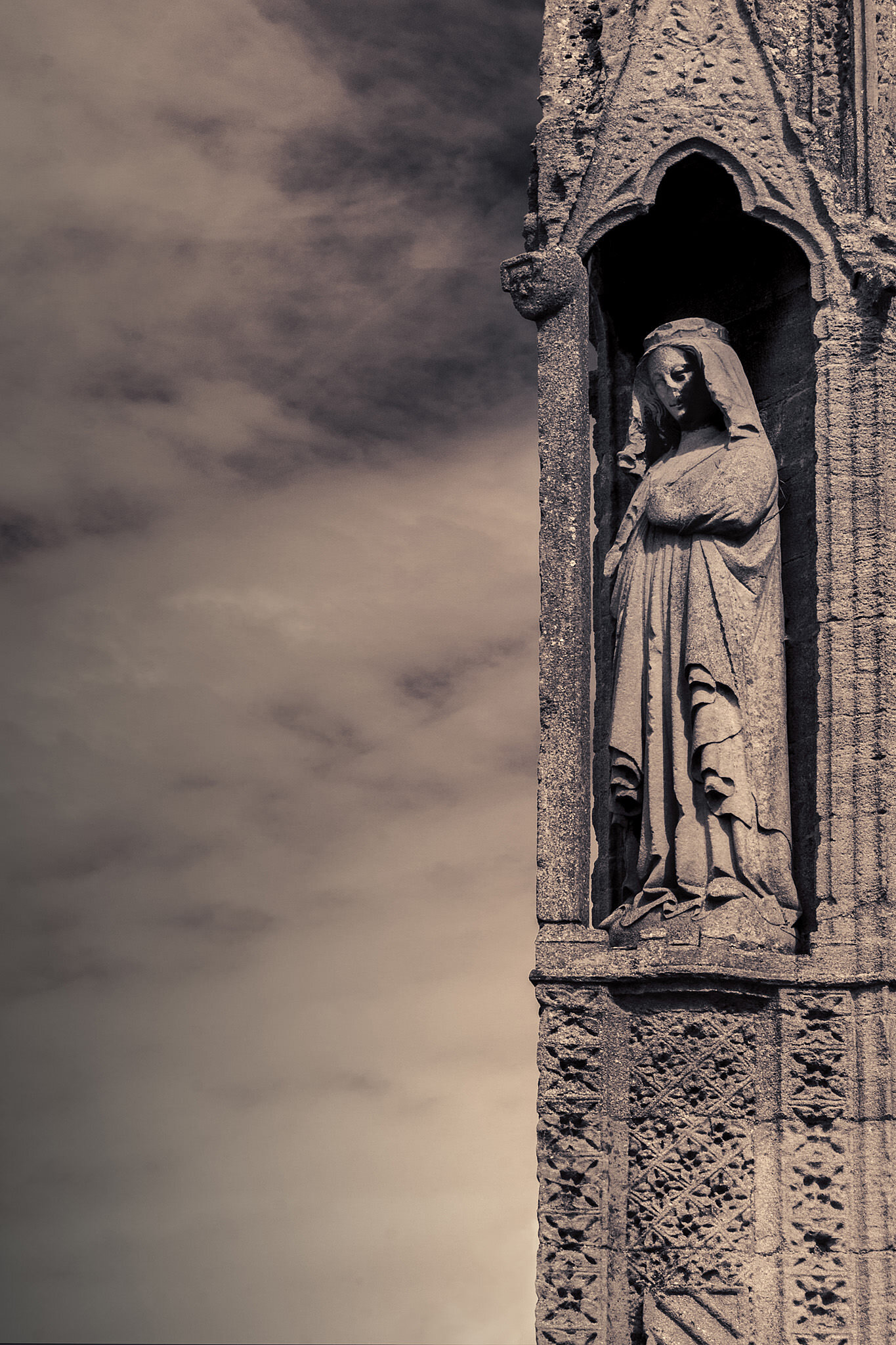Eleanor Cross, Geddington, East Midlands, England
Eleanor of Castile was born in 1241, she was the great, great, granddaughter of Eleanor of Aquitaine. She married Edward I at the age of 13 and at 14 she gave birth to their first child, who was still born. She went on to have between 14 and 16 children with Edward. Only 5 of their children survived to adulthood, the youngest to survive later became Edward II.
Edward I’s Queen, Eleanor of Castile, died at Harby in Lincolnshire in November of 1290. The King had her body embalmed near Lincoln and decreed a funeral procession all the way back to London, so that she could be buried in Westminster Abbey, with the exception of her viscera, less her heart, which was buried at Lincoln Cathedral. Only the crosses at Geddington, Hardingstone and Waltham Cross survive, of them the Geddington Cross is in the best condition.
The Eleanor crosses were erected at each place that the procession rested. There were once 12 in total. The stopping places, all having royal castles or major monasteries, were Lincoln, Grantham, Stamford, Geddington, Hardingstone, Stony Stratford, Woburn, Dunstable, St. Albans, Cheapside and Charing Cross. The crosses display an unusual sentimentality from a powerful and often cruel king, reminding us of the complexity of human nature even in the past.
All of the crosses were erected between 1291 and 1294. We know that John of Battle was commissioned to build them and William of Ireland carved the statues of the Queen. They were not identical either- the Hardingstone Cross was the most elaborate. The Geddington Cross has a triangular base and has three statues of the Queen, with shields and arms of England, Castile, Leon and Ponthieu. The Geddington Cross still commands the centre of the village after 700 years.
The church at Geddington is located near the cross and if you are there, then it is worth looking at. The church contains medieval gargoyles, brasses and carvings. In the 12th Century there was a royal hunting lodge nearby and the royal visitors even had their own door to the church, known as the King's Door. There was a Saxon church here originally but what we see today was built primarily from the 12th to 15th Centuries.





